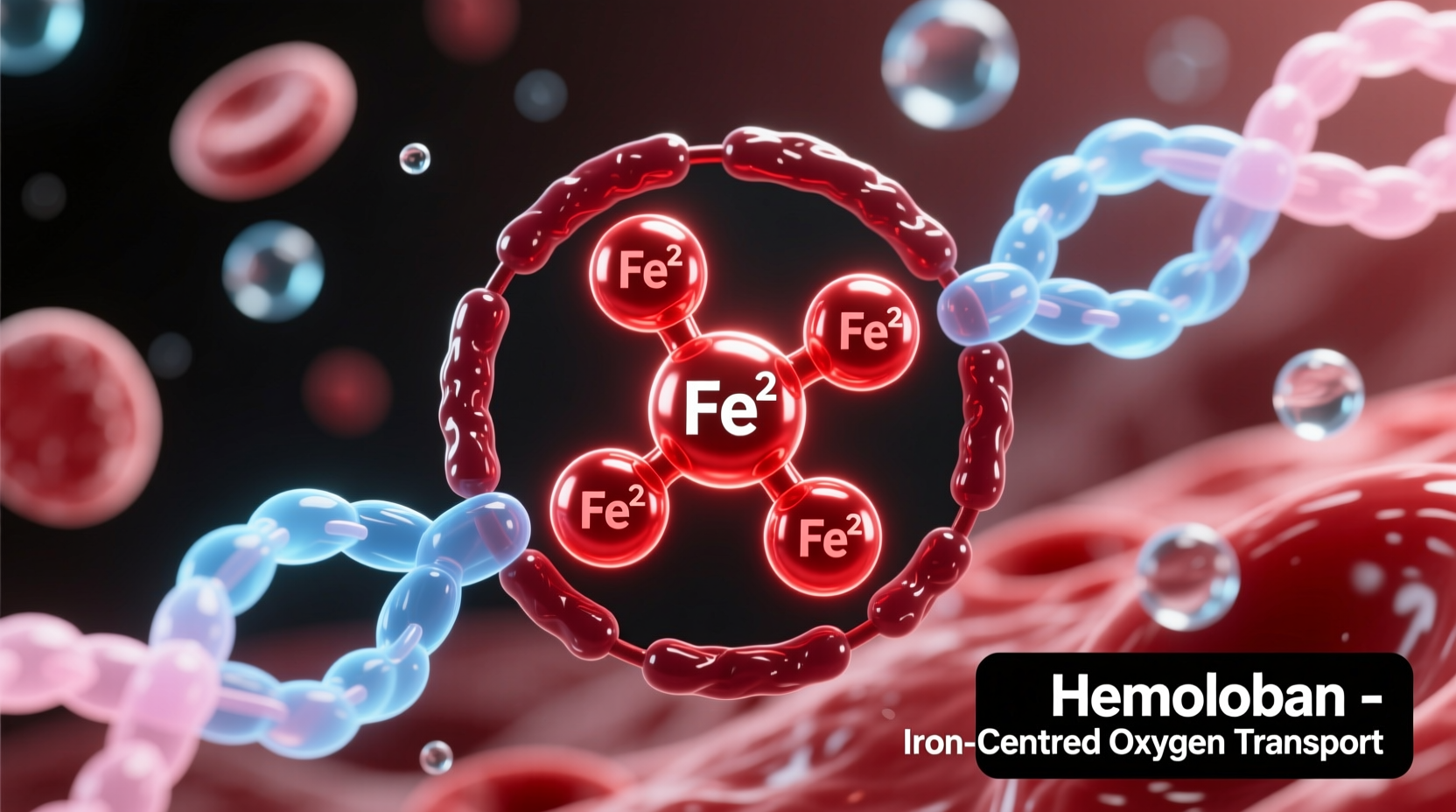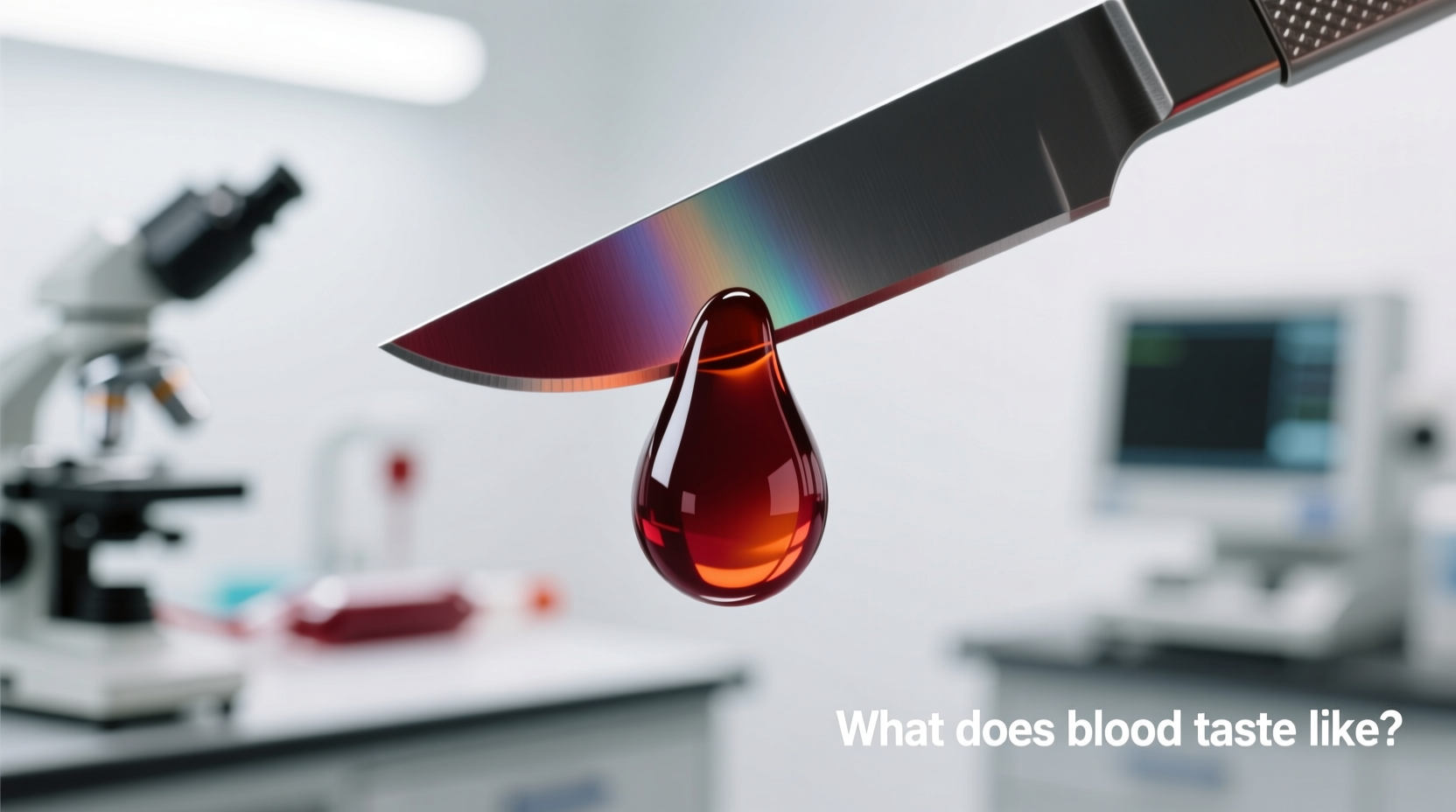The Science Behind Blood's Metallic Flavor
When you taste blood, what you're primarily detecting is the iron in hemoglobin, the protein that carries oxygen in red blood cells. Each hemoglobin molecule contains four iron atoms that bind to oxygen, creating that unmistakable metallic sensation on your tongue.
Research from the National Institutes of Health confirms that human taste receptors specifically detect iron compounds, triggering what we perceive as a metallic taste. This isn't just imagination—scientific studies using gas chromatography have identified over 30 volatile compounds in blood that contribute to its complex flavor profile.
| Component | Contribution to Taste | Scientific Basis |
|---|---|---|
| Hemoglobin iron | Primary metallic/coppery note | Iron atoms bind to taste receptors |
| Plasma proteins | Slightly sweet undertone | Glucose and other compounds |
| Sodium chloride | Salty dimension | Blood's natural salt content |
Common Situations Where You Might Taste Blood
Most people experience blood's taste during everyday occurrences rather than dramatic scenarios. The most frequent situations include:
- Minor oral injuries: Biting your cheek, lip, or tongue during eating or talking
- Dental procedures: Following cleanings, extractions, or other dental work
- Nosebleeds: When blood drips down the back of your throat
- Gum bleeding: From aggressive brushing or periodontal disease
According to the Mayo Clinic, these temporary experiences of tasting blood are usually harmless and resolve as the injury heals. The intensity of the metallic taste often corresponds to the amount of blood present—small amounts create a subtle coppery note, while larger quantities produce a stronger metallic sensation.

Blood in Culinary Traditions: How Cooking Changes the Flavor
While tasting raw blood might sound unappetizing, many cultures have incorporated animal blood into traditional dishes for centuries. European cuisines particularly feature blood-based foods that transform its metallic character through careful preparation.
"When properly cooked, blood's metallic notes mellow significantly," explains culinary expert Sophie Dubois. "In French boudin noir or British black pudding, the blood is mixed with fats, spices, and binding agents that create a rich, earthy flavor profile rather than a metallic one."
The Food and Agriculture Organization documents how traditional preparation methods—including careful collection, immediate mixing with vinegar or wine, and slow cooking—neutralize blood's metallic taste while preserving its nutritional benefits. These techniques demonstrate how culinary knowledge has evolved to transform potentially off-putting flavors into celebrated dishes.
When Blood Taste Signals Health Concerns
While occasional metallic taste from minor injuries is normal, persistent blood taste without obvious cause warrants attention. Certain medical conditions can create what's known as phantom metallic taste—the sensation of blood flavor without actual blood present.
Key warning signs that merit medical consultation include:
- Continuous metallic taste lasting more than 2 weeks
- Blood taste accompanied by unexplained fatigue or weakness
- Simultaneous symptoms like dizziness or shortness of breath
- Taste changes following new medication regimens
The Centers for Disease Control notes that persistent metallic taste can sometimes indicate iron overload disorders or deficiencies in other minerals that affect taste perception. A healthcare provider can determine whether your experience falls within normal variation or requires further investigation.
Practical Guidance for Managing Blood Taste
If you've experienced blood's metallic flavor and want to neutralize it:
- Rinse immediately: Use salt water or plain water to clear residual blood
- Consume citrus: Lemon or orange slices help counteract metallic notes
- Chew fresh herbs: Parsley or mint provide natural flavor reset
- Avoid hot foods: Heat can intensify the metallic sensation temporarily
For culinary applications, professional chefs recommend adding small amounts of acidic ingredients like vinegar or wine when working with blood-based recipes. This not only improves flavor but also serves the practical purpose of preventing coagulation during cooking.
Frequently Asked Questions
Why does blood taste metallic even in small amounts?
Blood contains iron in hemoglobin, which triggers specific taste receptors on your tongue designed to detect metal ions. Even tiny amounts (as little as 0.5 parts per million) can create this sensation because human taste receptors are highly sensitive to iron compounds.
Is it dangerous to swallow small amounts of blood from a nosebleed?
Swallowing small amounts of blood from minor injuries like nosebleeds is generally harmless for healthy individuals. However, larger quantities can irritate the stomach lining and cause nausea. If you frequently swallow significant blood volumes, consult a healthcare provider.
Can certain medications cause a blood-like metallic taste?
Yes, several medications including antibiotics, blood pressure drugs, and osteoporosis treatments can create metallic taste sensations. This occurs because some pharmaceutical compounds interact with taste receptors similarly to iron. Consult your pharmacist if this side effect persists.
How do traditional blood-based foods reduce the metallic flavor?
Traditional preparations use several techniques: immediate mixing with acidic ingredients (vinegar, wine), combination with fats and spices, and controlled cooking temperatures. These methods denature proteins and bind iron molecules, transforming the metallic profile into richer, earthier flavors characteristic of dishes like black pudding or blood sausage.











 浙公网安备
33010002000092号
浙公网安备
33010002000092号 浙B2-20120091-4
浙B2-20120091-4